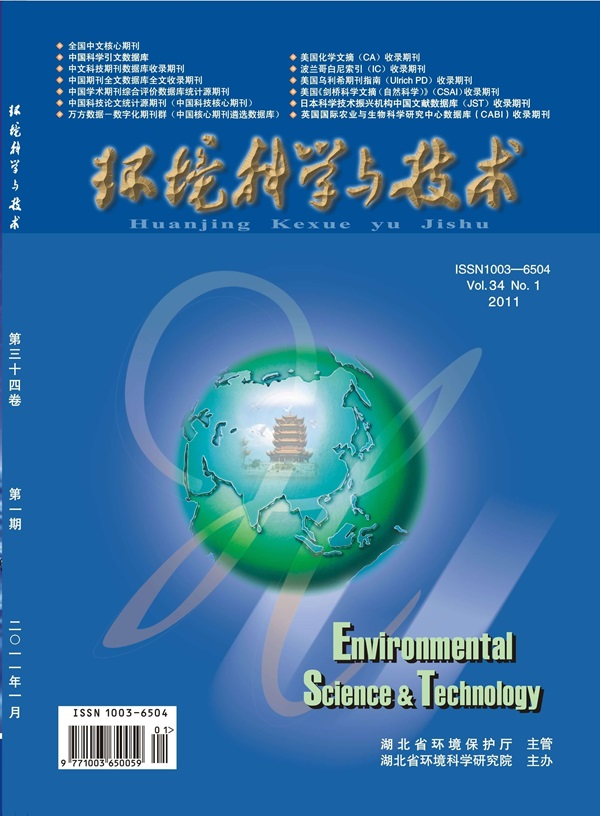A Hybrid Modeling Framework for Predicting Spatiotemporal Dynamics of Antimicrobial Resistance in Coastal Waters.
IF 10.8
1区 环境科学与生态学
Q1 ENGINEERING, ENVIRONMENTAL
引用次数: 0
Abstract
Antimicrobial resistance (AMR) in aquatic environments poses a critical threat to both environmental and human health. This study presents a novel hybrid modeling framework that integrates a process-based hydrodynamic-environmental model with a data-driven approach to predict the spatiotemporal dynamics of AMR in coastal waters. Macrolide-related antimicrobial resistance genes (ARGs_Macro) were selected as representative markers. The model results were validated using data from a monthly sampling campaign conducted across Singapore's coastal waters, yielding a mean coefficient of determination (R2) of 0.693, a Nash-Sutcliffe efficiency (NSE) of 0.589, and a root-mean-square deviation (RMSE) of 0.0257 GC/16S rRNA across 12 sampling points. Lincomycin, pH, dissolved oxygen, zinc and temperature were identified as significant influencers of ARGs_Macro. Although Lincomycin is not classified as a macrolide, it ranks as the most important driver of ARGs_Macro due to its shared resistance mechanisms with macrolides, potentially facilitating cross-resistance. The spatiotemporal model results revealed that coastal areas, particularly in the northern part of Singapore, are vulnerable to significant ARG accumulation, with monsoon seasons amplifying the spread of AMR due to hydrodynamic conditions. This study highlights the development of a robust modeling framework that provides valuable insights into the environmental drivers of AMR in coastal waters, offering a foundation for regulatory strategies and future research aimed at mitigating the risks of antimicrobial resistance in aquatic environments.预测沿海水域抗菌素耐药性时空动态的混合建模框架。
水生环境中的抗菌素耐药性(AMR)对环境和人类健康构成严重威胁。本研究提出了一种新的混合建模框架,该框架将基于过程的水动力-环境模型与数据驱动方法相结合,用于预测沿海水域AMR的时空动态。选择大环内酯类相关耐药基因(ARGs_Macro)作为代表性标记。使用在新加坡沿海水域进行的每月抽样活动的数据验证了模型结果,得出12个采样点的平均决定系数(R2)为0.693,纳什-萨特克利夫效率(NSE)为0.589,均方根偏差(RMSE)为0.0257 GC/16S rRNA。林可霉素、pH、溶解氧、锌和温度是影响ARGs_Macro的主要因素。虽然林可霉素不属于大环内酯类药物,但由于其与大环内酯类药物具有共同的耐药机制,可能促进交叉耐药,因此它是ARGs_Macro最重要的驱动因素。时空模式结果显示,沿海地区,特别是新加坡北部地区,容易受到ARG积累的影响,季风季节由于水动力条件而放大了AMR的传播。这项研究强调了一个强大的建模框架的发展,该框架为沿海水域AMR的环境驱动因素提供了有价值的见解,为旨在减轻水生环境中抗菌素耐药性风险的监管策略和未来研究提供了基础。
本文章由计算机程序翻译,如有差异,请以英文原文为准。
求助全文
约1分钟内获得全文
求助全文
来源期刊

环境科学与技术
环境科学-工程:环境
CiteScore
17.50
自引率
9.60%
发文量
12359
审稿时长
2.8 months
期刊介绍:
Environmental Science & Technology (ES&T) is a co-sponsored academic and technical magazine by the Hubei Provincial Environmental Protection Bureau and the Hubei Provincial Academy of Environmental Sciences.
Environmental Science & Technology (ES&T) holds the status of Chinese core journals, scientific papers source journals of China, Chinese Science Citation Database source journals, and Chinese Academic Journal Comprehensive Evaluation Database source journals. This publication focuses on the academic field of environmental protection, featuring articles related to environmental protection and technical advancements.
 求助内容:
求助内容: 应助结果提醒方式:
应助结果提醒方式:


